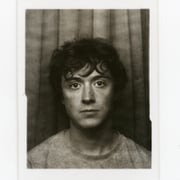Like many graduates of the COVID-19 years, Austin Quintana saw his plans for the future turn upside down. The photographer graduated from Boston’s Emerson College in 2019, and had planned to spend his first year out of school focusing on photographing the city with his new large format camera. Instead, he found himself moving back home to Rochester, New York, unsure of what to do next.

Quintana eventually decided to take his camera to New Mexico, where his father had grown up. Part of the reason was personal. “ I never felt that I was fully connected to the place. It was always in-and-out visits with no real integration,” he says. But his main goal was to capture the intensity and timelessness of a landscape he knew little about.

“New Mexico has this old-world atmosphere, with environmental challenges like droughts, wildfires, and floods,” he explains. “I’m trying to capture the endurance and resilience of people living there without making it feel like a straightforward documentary.” The project is titled Rocío, after the name of the river in the region, Cañada de Rocío. This translates to ‘Valley of Dew’ in Spanish. “One thing I love about New Mexico is its early mornings —they’re ethereal, misty, and unlike anywhere else. I wanted the title to capture that feeling,” Quintana says.

The images have a mythical quality, as though each tree, field, and face holds a story. He photographed his own family—his grandfather is a central figure—and people who lived in the surrounding valley. Many of the landscapes feel ominous, capturing a creeping storm or an abandoned church; the remnants of Spanish colonialism. “The land itself feels untouched, like it hasn’t changed in centuries, unlike most of America, which has been heavily developed. I’m trying to tap into that sense of myth and religious history,” he explains.

Quintana’s process is slow and deliberate. He shoots in the early morning and evenings, avoiding the harshness of the midday sun. “The landscape demands a certain approach to photography,” he explains. “There’s this vastness and intensity to it. It has this feeling of elevation and being closer to the sky which makes everything seem grander.” He shoots in black and white for this reason too, because it allows him to focus on the quality of light, especially during storms.

Rocío captures the resilience of the land and people who inhabit it, but Quintana isn’t interested in an objective truth. Instead, he seeks to capture the feeling of the place. “There’s an ambivalence to it—it’s harsh and difficult to live in, but it’s also stunningly beautiful.” he says.














